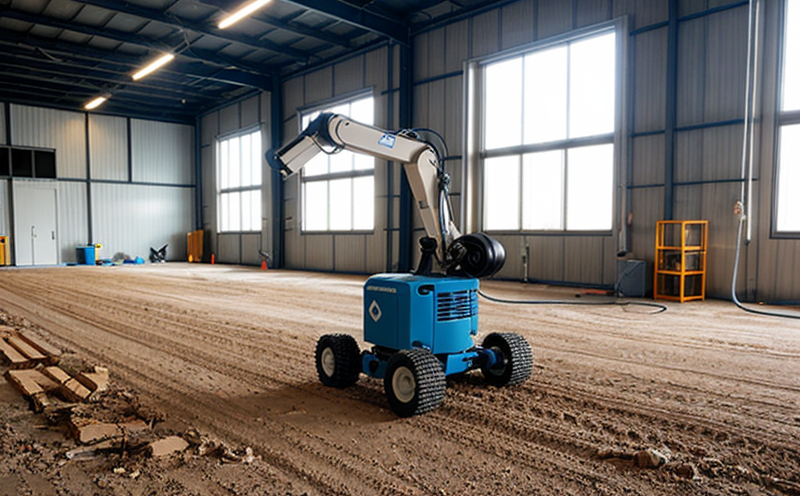IEC 60068-2-14 Thermal Shock Testing of Robotic Hardware
The International Electrotechnical Commission (IEC) standard IEC 60068-2-14 provides a framework for conducting thermal shock tests, which are critical in assessing the durability and reliability of robotic hardware. This method is particularly important for ensuring that robots can withstand extreme environmental conditions without compromising performance or safety.
Thermal shock testing involves subjecting a specimen to rapid and repeated temperature cycling between two defined temperatures. The goal is to evaluate how well the robot's components, materials, and design stand up to these harsh conditions. This service ensures that robotic systems are robust enough for use in various environments such as space exploration, industrial manufacturing, or harsh outdoor conditions.
The standard is widely recognized for its ability to simulate real-world stressors on electronic devices. By following the IEC 60068-2-14 protocol, we can provide our clients with a comprehensive understanding of how their robotic hardware will perform under thermal extremes.
During the testing process, it is crucial to prepare the specimen correctly. This includes ensuring that the robot's components are representative of the intended use and that they have been assembled according to design specifications. Proper conditioning and stabilization times must also be considered to ensure accurate results.
The test setup typically involves a thermal chamber capable of precise temperature control and rapid heating/cooling cycles. The chamber is designed to maintain stable temperatures within narrow tolerances, ensuring repeatability and accuracy in the test results.
Once the specimen has been prepared, it undergoes a series of controlled temperature changes. These changes are carefully programmed according to the standard's requirements, ensuring that the robot experiences realistic thermal stress conditions. The duration and frequency of these cycles depend on the specific application and expected environmental exposure.
The testing process is closely monitored using advanced instrumentation. This includes sensors to track temperature changes, humidity levels, and other relevant parameters. Data collection is essential for accurate reporting and analysis of test results.
Upon completion of the tests, detailed reports are generated that include all relevant data from the thermal shock cycles. These reports provide insights into any potential weaknesses in the robotic hardware's design or materials. They also offer recommendations for improvements to enhance durability and reliability.
Scope and Methodology
| Parameter | Description |
|---|---|
| Temperature Range | The test involves cycling the specimen between two defined temperatures, typically including extreme cold and hot conditions. |
| Cycling Rate | The rate at which the temperature changes during each cycle is critical for accurate testing. |
| Duration of Exposure | The time spent in each temperature range and between cycles impacts the test's effectiveness. |
Environmental and Sustainability Contributions
- Safeguards against premature failures in harsh environments, extending product lifecycle and reducing waste.
- Promotes the development of more resilient robotic systems that can operate efficiently under varied conditions.
- Supports sustainable manufacturing practices by ensuring robust designs that require fewer replacements or repairs.
Competitive Advantage and Market Impact
- Enhances product reliability, increasing customer satisfaction and brand loyalty.
- Facilitates compliance with regulatory standards, opening doors to new markets globally.
- Paves the way for innovation in robotics by identifying areas for improvement early in the development process.





